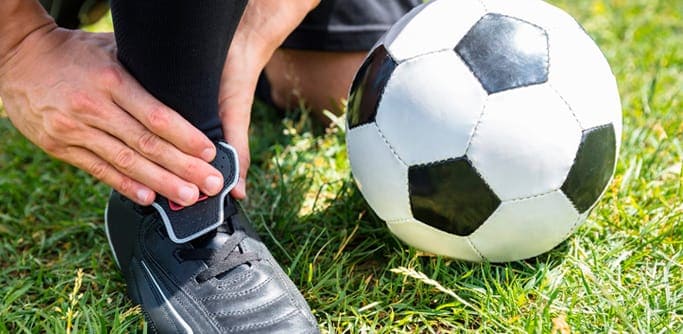February 11, 2025

An ankle injury on the soccer field can be a devastating setback for an athlete at the top of their game. Not only does the athlete suffer, but the entire team takes a hit, and even the coach stands to face career issues if a key player goes down in mid-season. Needless to say, there is a lot of pressure for an athlete to return to play (RTP) as soon as possible.
However, returning to sport without adequate recovery and rehabilitation is risky. Not only does premature RTP put an athlete at risk for re-injury of the same ankle, but it also sets them up for compensation injuries as they redistribute force loads to protect the injured appendage. In other words, something else gets injured as the athlete, consciously or subconsciously, strives to prevent re-injury.
One reason athletes often return to sport prematurely is lack of objective and reliable criteria for physicians, therapists and coaches to evaluate their readiness. Even in the case of a fracture whose degree of healing can be discerned more or less objectively through imaging technology, the soft tissue structures surrounding the injury that produce force and provide stability must also be fully rehabilitated and strengthened.
In some cases, doctors and coaches rely on a timetable to determine when an athlete is ready for RTP. Taking into account the type of injury, be it a sprain, fracture, multiple ligament injury or a combined fracture and ligament injury, they guesstimate when an injury has had adequate time to heal.
The problem with a timeline approach is that every injury has unique characteristics, and every athlete has a unique anatomy and capacity to heal.
Other factors that affect RTP time include:
In addition to physical readiness, the athlete must be mentally prepared to go back onto the playing field. There is a great deal of psychology in sports performance, and mental readiness is imperative for RTP. After an injury, the athlete may fear re-injury and hold back during play. Yet in aggressive high-velocity sports like soccer, holding back can cost you, setting you up for collisions with other players. The athlete may also use protective compensation mechanisms that set them up for injury.
There are a number of functional tests that can be used to determine an athlete’s readiness for RTP. While not wholly objective, they give clinicians some means of measuring the degree of healing and rehabilitation of an athlete’s ankle.
Athletes should be evaluated for balance and proprioception, strength, range of motion, and agility, along with a psychological assessment to determine readiness for RTP.
Common tests for ankle function include:
While clinical measures are useful, clinicians must also rely on experience and instinct. Furthermore, the athlete should be included as a stakeholder in determining their readiness for RTP.
If you have sustained an ankle injury during soccer or other sports, the sports medicine specialists at NYDNRehab are skilled and experienced at restoring function for athletes, enabling them to return to play with minimal risk for re-injury.
At NYDNRehab, we use state-of-the-art technology that is rarely found in most rehab clinics, and our clinical staff are top-notch professionals. If you are determined to return to the playing field, do not trust your ankle rehabilitation to just anyone. Contact NYDNRehab today, and see why we are considered the very best rehabilitation clinic for athletes in NYC.
Dr. Lev Kalika is a world-recognized expert in musculoskeletal medicine. with 20+ years of clinical experience in diagnostic musculoskeletal ultrasonography, rehabilitative sports medicine and conservative orthopedics. In addition to operating his clinical practice in Manhattan, he regularly publishes peer-reviewed research on ultrasound-guided therapies and procedures. He serves as a peer reviewer for Springer Nature.
Dr. Kalika is an esteemed member of multiple professional organizations, including: